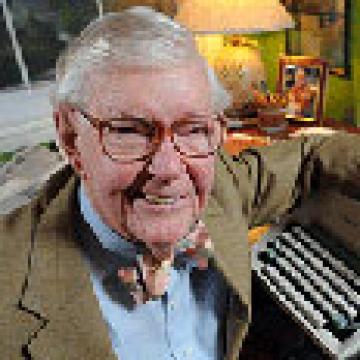Franklin D. Roosevelt: Impact and Legacy
Franklin Delano Roosevelt served as President from March 1933 to April 1945, the longest tenure in American history. He may have done more during those twelve years to change American society and politics than any of his predecessors in the White House, save Abraham Lincoln. Of course, some of this was the product of circumstances; the Great Depression and the rise of Germany and Japan were beyond FDR's control. But his responses to the challenges he faced made him a defining figure in American history.
Americans elected Roosevelt President in 1932 because they believed he could combat the Depression more effectively than his Republican opponent, President Herbert Hoover. Roosevelt promised a "new deal" and he certainly delivered. By implementing a variety of innovative policies, FDR was able to pull the United States away from the brink of economic, social, and perhaps even political, disaster—and lay the foundation for future stability and prosperity.
Under FDR, the American federal government assumed new and powerful roles in the nation's economy, in its corporate life, and in the health, welfare, and well-being of its citizens. The federal government in 1935 guaranteed unions the right to organize and bargain collectively, and the Fair Labor Standards Act of 1938 established a mechanism for putting a floor under wages and a ceiling on hours that continues to this day. It provided, in 1935, financial aid to the aged, infirm, and unemployed when they could no longer provide for themselves. Beginning in 1933, it helped rural and agricultural America with price supports and development programs when these sectors could barely survive. Finally, by embracing an activist fiscal policy after 1937, the government assumed responsibility for smoothing out the rough spots in the American economy.
Writ large, the New Deal sought to insure that the economic, social, and political benefits of American capitalism were distributed more equally among America's large and diverse populace. The New Deal did this to a remarkable degree. But FDR's New Deal failed to cure completely the Depression-induced ills of the American economy. By 1940, the percentage of Americans without jobs remained in double digits and the American people lacked the purchasing power to jump start the economy. Only American entry into World War II ended this torpor.
If capitalism was still sick in 1940, democracy was also suffering from various maladies. African Americans and women, despite a number of benefits accrued from the New Deal, still received far fewer of those benefits than white males and, partly as a result, remained at the bottom of the American economic ladder. The New Deal, moreover, did nothing to ensure that rights guaranteed to all Americans via the Constitution, such as the right to vote and the right to a fair trial, were guaranteed to blacks.
If FDR was elected in 1932 to fight the Depression, he was largely re-elected in 1940 because Americans believed he could guide the nation through a period of treacherous international relations. FDR correctly understood that Japan and Germany threatened the United States, which in turn endangered the cherished freedoms Americans enjoyed at home. With the onset of war in 1939, FDR ably guided America's efforts to aid its allies without formally entering into hostilities. When Japan and Germany forced his hand in December 1941, Roosevelt rallied Americans in support of a massive war effort, both at home and abroad.
FDR hoped that the war would produce a more secure and peaceful postwar world, and he became a major proponent of a postwar United Nations, in which the United States would be a leading member. FDR, however, left to his successors the thorny problem of relations with the Soviet Union, which quickly replaced Germany and Japan as America's chief global adversary. Nonetheless, a sea change had occurred in American foreign relations under FDR. By 1945, the United States had become a global power with global responsibilities—and its new leaders both understood this new reality and had the tools at their disposal to shape the world accordingly.
FDR also reshaped the American presidency. Through his "fireside chats," delivered to an audience via the new technology of radio, FDR built a bond between himself and the public—doing much to shape the image of the President as the caretaker of the American people. Under FDR's leadership, the President's duties grew to encompass not only those of the chief executive—as implementer of policy—but also chief legislator—as drafter of policy. And in trying to design and craft legislation, FDR required a White House staff and set of advisers unlike any seen previously in Washington. The President now needed a full-time staff devoted to domestic and foreign policies, with expertise in these areas, and a passion for governance. With enactment of the Executive Reorganization bill in 1939, FDR changed the shape of the White House forever. In sum, President Roosevelt greatly increased the responsibilities of his office. Fortunately for his successors, he also enhanced the capacity of the presidency to meet these new responsibilities.
